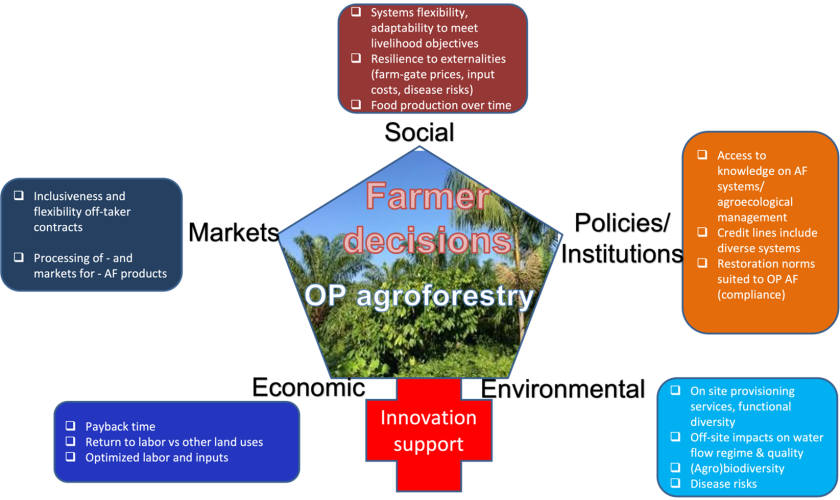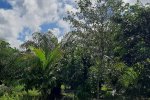
Project
Oil palm agroforestry in theBrazilian Amazon
The study aims to assess the potential for - and factors underlying - scaling of oil palm agroforestry by examining its social, ecological and financial feasibility, based on action research demonstration sites and learning on livelihoods/land use strategies in the wider landscape of Tomé Açu, Eastern Brazilian Amazon.
- Globally, palm oil is mainly produced in monocrop plantations, which can be highly productive but are also associated with negative environmental and mixed livelihoods impacts
- Oil palm () is the highest-yielding and most widely consumed vegetable oil crop in the world
- This palm tree has been vilified by some due to the impact of land clearing to establish large-scale monocrop plantations on forests and biodiversity, particularly in Southeast Asia
- Oil palm in agoforestry systems is a novel technology vis-à-vis the dominant monospecific production paradigm, there is still scant scientific evidence on its social-ecological and financial feasiblity
- Scaling oil palm agroforestry entails bringing about changes in the prevailing palm oil production systems and business models so that they match farmer objetives and livelihoods strategies
- The municipality of Tomé Açu in Pará State, Eastern Brazilian Amazon has been a center of innovation in agroforestry and expansion of conventional oil palm plantations
- This justaposition of different production systems in the same landscape provides unique oppporutnities for understanding agroecological transitions and trade-offs between different farming systems and practices
By examining outcomes achieved by different types of farmers adopting different technological pathways, this study will shed light on the various factors underlying adoption at the plot, household and lanscape scale, by:
- describing the PLANTSAFs tool and assessing the effectiveness of the associated participatory approach to co-designing oil palm agroforestry solutions tailored to farmer contexts
- assessing the social, economic and ecological performance and trade-offs of different farmer-led oil palm agroforestry systems:
- identifying gaps between – and opportunities for reconciling – the prevailing oil palm business model/value chain characteristics with agroforestry, and
- understanding farmer rationale and decisions surrounding different land use options, including agroforestry, oil palm and other land uses, and their implications for water balance and flows at the landscape level functions.
We draw from early evidence from demonstration sites, examine constraints for wider adoption in light of:
- biophysical, socio-ecological context, land use and livelihoods strategies
- ovalue chains, business models and market factors that might influence agroecological transitions
- This study will also perform companion modeling through serious games to simulate land use decisions and motivations and their implications on forest and water in the wider landscape.
- These analyses at different scales will point to the factors determining adoption of oil palm agroforestry and pathways for diversification that may address the various hurdles to scaling oil palm agroforestry in this context.
- Farmer decisions towards diversification and innovation at the plot and farm scale will hinge on the extent to which these economic, social, market and governance/policy factors are present (See diagram below), and thus point to pathways for diversification that should be considered in co-design and innovation support processes.
This project is part of the SESAM - Scenario Evaluation for Sustainable Agroforestry Management.




